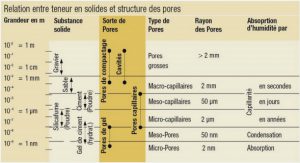1. CONTENTS
1 Scope
2Document Status
2.1 Copyright Notice
2.2 Errata
2.3 Comments
3 References
3.1 Normative references
3.2 Informative References
4 Definitions and abbreviations
4.1 Definitions
4.2 Abbreviations
5 Notational Conventions
6 WMLScript Compliance
6.1 Supported Data Type
6.2 Data Type Conversions
6.3 Error Handling
6.4 Support for Integer-Only Devices
7 Lang
7.1 abs
7.2 min
7.3 max
7.4 parseInt
7.5 parseFloat
7.6 isInt
7.7 isFloat
7.8 maxInt
7.9 minInt
2. 1. SCOPE
Wireless Application Protocol (WAP) is a result of continuous work to define an industry-wide specification for developing applications that operate over wireless communication networks. The scope for the WAP Forum is to define a set of standards to be used by service applications. The wireless market is growing very quickly and reaching new customers and services. To enable operators and manufacturers to meet the challenges in advanced services, differentiation and fast/flexible service creation, WAP defines a set of protocols in transport, session and application layers. For additional information on the WAP architecture, refer to Wireless Application Protocol Architecture Specification [WAP].
3. 2. DOCUMENT STATUS
This document is available online in the following formats:
• PDF format at http://www.wapforum.org/.
3.1 2.1 Copyright Notice
© Wireless Application Protocol Forum Ltd. 1999. Terms and conditions of use are available from the Wireless Application Protocol Forum Ltd. web site (http://www.wapforum.org/docs/copyright.htm).
3.2 2.2 Errata
Known problems associated with this document are published at http://www.wapforum.org/.
3.3 2.3 Comments
Comments regarding this document can be submitted to the WAP Forum in the manner published at http://www.wapforum.org/.
4. 3. REFERENCES
4.1 3.1 Normative references
[ECMA262] Standard ECMA-262: « ECMAScript Language Specification », ECMA, June 1997
[IEEE754] ANSI/IEEE Std 754-1985: « IEEE Standard for Binary Floating-Point Arithmetic ».
Institute of Electrical and Electronics Engineers, New York (1985).
[RFC2119] « Key words for use in RFCs to Indicate Requirement Levels », S. Bradner, March
1997. URL: ftp://ftp.isi.edu/in-notes/rfc2119.tx
[RFC2396] « Uniform Resource Identifiers (URI): Generic Syntax », T. Berners-Lee, et al.,
August 1998. URL: http://info.internet.isi.edu/in-notes/rfc/files/rfc2396.txt
[UNICODE] « The Unicode Standard: Version 2.0 », The Unicode Consortium, Addison-Wesley
Developers Press, 1996. URL: http://www.unicode.org/
[WAP] « Wireless Application Protocol Architecture Specification », WAP Forum,
30-April-1998. URL: http://www.wapforum.org/
[WML] « Wireless Markup Language Specification », WAP Forum, 04-November-1999.
URL: http://www.wapforum.org/
[WMLScript] « WMLScript Language Specification », WAP Forum, 04-November-1999. URL:
http://www.wapforum.org/
[WSP] « Wireless Session Protocol », WAP Forum, 05-November-1999. URL:
http://www.wapforum.org/
4.2 3.2 Informative References
[JavaScript] « JavaScript: The Definitive Guide », David Flanagan. O’Reilly & Associates, Inc.1997
[RFC2068] « Hypertext Transfer Protocol – HTTP/1.1 », R. Fielding, et al., January 1997. URL:
ftp://ftp.isi.edu/in-notes/rfc2068.txt
[WAE] « Wireless Application Environment Specification », WAP Forum,04-November-1999. URL: http://www.wapforum.org/
[XML] « Extensible Markup Language (XML), W3C Proposed Recommendation 10February-1998,REC-xml-19980210 »,
T. Bray, et al, February 10, 1998. URL:http://www.w3.org/TR/REC-xml
5. 4. DEFINITIONS AND ABBREVIATIONS
5.1 4.1 Definitions
The following are terms and conventions used throughout this specification.
The key words « MUST », « MUST NOT », « REQUIRED », « SHALL », « SHALL NOT », « SHOULD », »SHOULD NOT », « RECOMMENDED », « MAY » and « OPTIONAL » in this document are to be interpreted as described in [RFC2119].
Bytecode – content encoding where the content is typically a set of low-level opcodes (ie,instructions) and operands for a targeted hardware (or virtual) machine.Client – a device (or application) that initiates a request for connection with a server.Content – subject matter (data) stored or generated at an origin server. Content is typically displayed or interpreted by a user agent in response to a user request.
Content Encoding – when used as a verb, content encoding indicates the act of converting a data object from one format to another. Typically the resulting format requires less physical space than the original, is easier to process or store and/or is encrypted. When used as a noun, content
encoding specifies a particular format or encoding standard or process.
Course WMLScript Standard Libraries Specification (323 KO) (Cours PDF)






